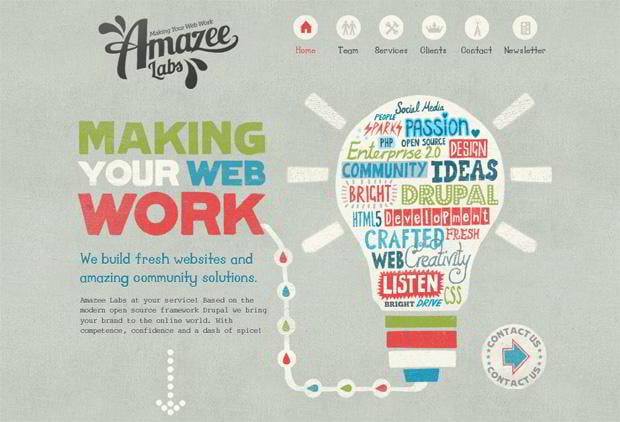The Growth Of Web Design: Then And Currently
The Growth Of Web Design: Then And Currently
Blog Article
Post Created By- https://www.google.com/maps/place/Moon+and+Owl+Marketing/@32.9757271,-106.5344695,1840583m/data=!3m1!1e3!4m6!3m5!1s0x864ddeaa4179705b:0x488d41d2cc6b9750!8m2!3d32.9757271!4d-97.5696258!16s%2Fg%2F11b6mpccrg?entry=ttu&g_ep=EgoyMDI1MDIxMS4wIKXMDSoJLDEwMjExNDUzSAFQAw%3D%3D
In the past, web sites were straightforward and focused on information. Navigating was direct, and design was for desktops. Currently, customer experience is crucial. Data overviews designs for simple navigating. Receptive formats match various gadgets. Today, dark mode lowers strain, and minimalist food selections enhance navigation. Interactive attributes involve users, and vibrant visuals attract attention. AI combination increases involvement. See how layout has developed to enhance your on-line trip.
Early Days of Web Design
In the early days of website design, simpleness reigned supreme. Websites were standard, with restricted colors, typefaces, and formats. The emphasis got on giving info rather than flashy visuals. Individuals accessed the internet with slow-moving dial-up connections, so rate and functionality were essential.
Navigating food selections were straightforward, commonly situated at the top or side of the web page. Sites were made for home computer, as mobile browsing wasn't yet common. Web content was king, and developers focused on easy readability over complex design elements.
HTML was the key coding language utilized, and designers needed to function within its restraints. Animations and interactive features were marginal compared to today's criteria. Websites were static, with little vibrant content or personalized user experiences.
Rise of User-Focused Design
With the evolution of internet site layout, a change towards user-focused style concepts has actually ended up being progressively prominent. Today, creating websites that prioritize individual experience is crucial for engaging site visitors and accomplishing company objectives. User-focused style entails recognizing the requirements, choices, and behaviors of your target audience to customize the internet site's layout, content, and features accordingly.
Developers currently perform thorough research, such as customer surveys and use screening, to gather understandings and comments straight from individuals. This data-driven strategy aids in producing instinctive navigation, clear calls-to-action, and visually enticing interfaces that resonate with site visitors. By placing the user at the facility of the layout process, sites can deliver a much more tailored and enjoyable experience.
Responsive style has also emerged as an essential facet of user-focused style, guaranteeing that websites are enhanced for numerous devices and screen dimensions. This versatility improves availability and functionality, satisfying the diverse methods customers engage with web sites today. Essentially, the surge of user-focused design indicates a shift towards creating digital experiences that prioritize the requirements and assumptions of completion individual.
Modern Trends in Website Design
Discover the most up to date trends shaping web design today. One popular pattern is dark mode layout, offering a sleek and contemporary look while reducing eye pressure in low-light atmospheres. One more key fad is minimalist navigation, streamlining food selections and boosting individual experience by concentrating on essential elements. Including micro-interactions, such as animated switches or scrolling impacts, can produce an extra engaging and interactive site. Receptive layout remains essential, making sure smooth user experiences across different gadgets. Additionally, utilizing strong typography and asymmetrical formats can add visual interest and accentuate particular web content.
Integrating https://www.htmlgoodies.com/seo/tips-for-google-business-listings/ , like chatbots for customer assistance or individualized suggestions, boosts customer involvement and simplifies procedures. Ease of access has likewise come to be a substantial fad, with designers focusing on inclusive layout practices to satisfy diverse user demands. Accepting sustainability by enhancing internet site efficiency for speed and effectiveness is an additional emerging pattern in web design. Working together with user comments and data analytics to repeat and improve layout continuously is crucial for staying appropriate in the ever-evolving electronic landscape. By embracing these contemporary fads, you can develop an aesthetically enticing, user-friendly internet site that reverberates with your audience.
Final thought
As you review the evolution of internet site design from the early days to now, you can see how user-focused style has actually come to be the driving force behind modern-day trends.
Accept the journey of change and adaptation in web design, always keeping the user experience at the leading edge.
Stay existing with the current fads and modern technologies, and never ever stop advancing your technique to produce visually magnificent and easy to use web sites.
Evolve, adapt, and create - the future of website design is in your hands.
